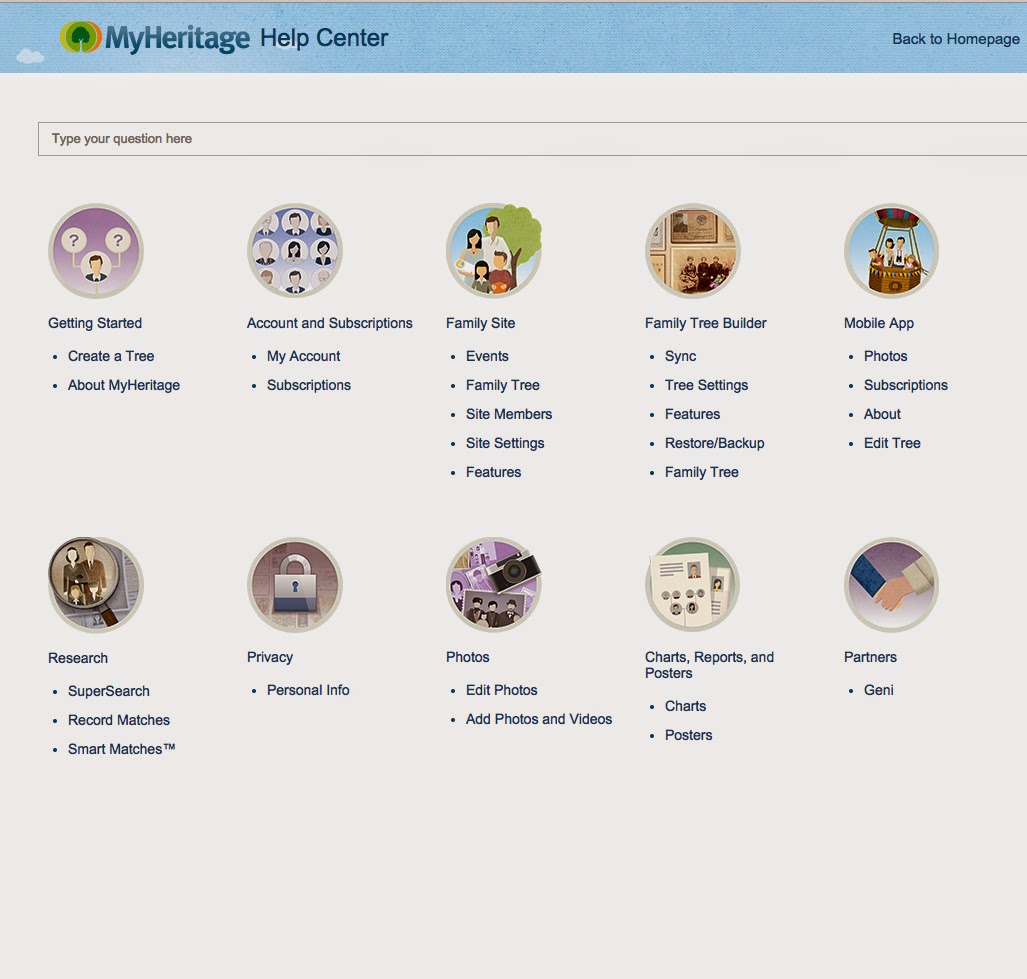Paper-based manuals and instruction books for the large online genealogy programs are nearly impossible to produce. Some time ago, I wrote a manual for FamilySearch Online. I realized that after a while, the manual was somewhat and then mostly outdated. But what to do about an update? The program kept changing and keeps changing almost every week. Anything you write about FamilySearch.org will be obsolete within a very short time. I kept waiting for the changes to slow down but that never happened. But that raises a very interesting question; where do you go to get basic instruction in each of the programs?
The methods I discuss will work for most of the larger online programs I do not cover in this blog post. Instruction and help centers for the remaining, less popular or extensive, programs depend entirely on the developers. Some have detailed instructions, others have perfunctory or no instructions. You should always search on YouTube.com for additional video instruction on any program you wish to learn. All of these programs mentioned have their own dedicated YouTube.com channel.
Here are my suggestions for each of the larger programs:
FamilySearch.org
FamilySearch probably has the largest, most elaborate and complete instructions and help center of any program online, genealogy or otherwise. No one program I have seen provides the depth and breadth of help provided by FamilySearch. Here is a screenshot showing the Get Help link:
Clicking on the link produces a drop-down menu of help items. These include the following categories:
Different parts of the FamilySearch.org website have their own help sections or resources. For example the Research Wiki has all of the help articles integrated into the program so that users can simply type the word "help" and find thousands of pages of help articles on every conceivable topic. The Indexing program has its own elaborate help menu. Here is a screenshot of the link:
Indexing instructions are arranged by the role the volunteers play in the Indexing program:
All of the other sections of the website are covered in the Help Center. Note the link to the "Help Center" only appears in the menu when you are on the startup page. Also some of the following topics do not appear unless you are logged in with an LDS Account:
The icon links take you to the help center for each of the sections of the website. The Help Center is supplemented by the Learning Center. Here is a screenshot:
The arrow points to a link to the main set of instructions for the Family Tree program, the Family Tree Training Lessons and Videos.
Ancestry.com
Ancestry.com is a bit more conservative in their approach to Help. Here is a screenshot of the link:
The menu on the Help page is nearly as extensive as that for FamilySearch.org.
Every section of the program is covered with an extensive array of suggestions and solutions to problems. Here is a screenshot of an example from the Member Tree section:
MyHeritage.com
MyHeritage.com is probably the program I get the most questions about. Apparently, the users fail to look at the links on the bottom of the startup page. Here is a screenshot of the bottom of the page with an arrow pointing to the links to Support, Help and the Forums.
Here is another screenshot showing the page available from the Support link:
There are three sections: the Help Center, the Forums and many Video Tutorials. The Help Center is extensive and detailed:
The Forums also provide an extensive and rapid response to particular questionsm mainly because of the huge membership base of MyHeritage around the world.
The Video Tutorials are more basic but are supplemented by a large number of videos on YouTube.com.
findmypast.com
I have never been able to figure out why some users of all of these programs, when they have a question, fail to go to the help menus with their extensive resources. Every day I am providing support, I get questions that can be answered rather easily from the help menus. Here in findmypast.com that is also the situation. Here is a screenshot with an arrow showing the link to the Help and advice link.
The link has four choices; Getting started, Expert advice, Top tips and Frequently asked questions. Here are the screenshots for each of these choices:
Getting started:
Expert advice:
Top tips:
And last, Frequently asked questions:
If you realize that these help centers and other resources are always available, you can quickly answer any type of questions. As you can see, the amount of support varies from program to program but there is always more in the help menus than most people realize.























Good job as usual. If you sent this out at about 7 AM, when did you sleep?
ReplyDeleteWhere can I find a glossary of odd terms and abbreviations that might be encountered in English parish registers and other English sources. A few I found lately that took me some time to decipher: AT, HMD, and IPO.
Thanks
Where can I find a glossary of odd terms and abbreviations in English sources? Some that were hard for me to deciper: AT, HMD, IPO. Thanks.
ReplyDelete